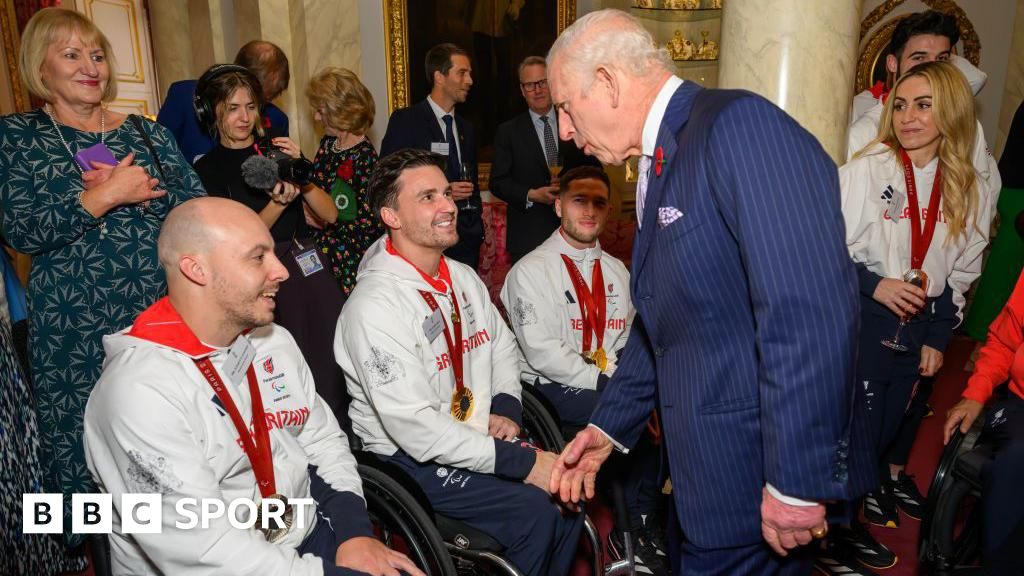Fitness
How This Self Proclaimed Night Owl Transformed Herself Into A Morning Workout Person

There are two types of athletes: the 4 a.m. warriors, and those who would rather carry dumbbells all day than work out in the morning. If you asked me three months ago, I would have chosen the latter. But now, over halfway through marathon training and several 6 a.m. alarms later, I’ll admit it: I’m a changed person.
As I planned out my marathon training schedule, nothing sounded worse than waking up with the sun to run 16 miles—especially on a Saturday. I’ve learned to not only embrace the challenge but thrive under it. And I have never felt stronger and healthier, both as a runner and human being. I credit the transformation to one small change: a morning workout routine.
Dreading that morning sweat? Here are five benefits to an a.m. workout that will get you out of bed in the morning, plus exactly how to get started, from experts.
Meet the experts: Alexa Noban, CPT, is a fitness coach in New York City. Lindsay Pantaleon, CPT, is a trainer at DOGPOUND. Calyn Brooke, CPT, is a trainer in Arizona. Lisbeth Jennings, PT, DPT, is a physical therapist in New York City. Claire Rifkin, MS, RDN, is a dietician based in New York City.
Benefits Of A Morning Workout Routine
1. It contributes to better sleep quality.
Exercise in general can help improve various aspects related to sleep which can lead to improved wellbeing, increased energy, reduced stress, and simply feeling well-slept, according to a 2024 study in Scientific Reports. Older research looked specifically at early morning exercise and found that it led to a decline in nighttime blood pressure, which contributed to better sleep.
“Morning exercise, especially if done outdoors, helps regulate your circadian rhythms,” says Alexa Noban, CPT, a fitness coach in New York City. “Exposure to morning light tells your body that it’s time to be awake and alert, which sets the stage for better sleep at night. This rhythm makes it easier to fall asleep and stay asleep, leading to improved recovery and overall health.”
2. It boosts your mood.
Nothing feels better than checking off a workout before a busy day ahead. Exercise releases endorphins, the “feel-good” hormone that helps you achieve a post-workout high. Think of it as a natural energy boost sans caffeine. “You’ll feel more energized throughout the day because physical activity increases blood flow, delivering more oxygen and nutrients to your muscles and brain,” says Noban.
3. It could help you to be more productive.
Morning exercise is good for both your body and brain. “You’ll find that you’re sharper and more productive throughout the day because your body has already gotten moving,” says Noban. “Studies have shown that exercise can improve memory and problem-solving skills, so that morning sweat session is also a mental workout.”
4. It may help with weight loss.
Sticking to a workout schedule is key when it comes to fitness gains and weight loss, if that’s what you’re going for. Consistent morning exercise in particular may help you make it a habit, and lead to more overall exercise, according to a 2020 review in Exercise and Sport Sciences Reviews. And that’s a good thing for any goal!
5. It plays a key role in injury prevention.
By getting active early, your muscles will be primed for optimal performance the rest of the day—and that may decrease the risk of injury, says Lindsay Pantaleon, CPT, a trainer at DOGPOUND.
Pro tips for getting started with a.m. workouts
If you’re not a morning person, getting your head off the pillow to start breaking a sweat can be tough. These pro tips can help:
1. Define your “why.”
Whether your motivation is mental or physical, having a clear idea as to why you want to get out of bed in the morning is crucial. “It’s so easy to skip a workout when you face even the smallest inconvenience, like taking time off for vacation, getting bad sleep, or when your gym buddy bails,” says Noban. “If your ‘why’ is strong, it’ll push you through those tough moments and keep you going, even when you really don’t feel like it.”
Personally, my “why” is to feel strong both mentally and physically. I started running during the pandemic, when my mental health was suffering, and running gave me a new passion and purpose. Since then, it has been a source of strength for me and a major mood booster.
2.Put a plan in place.
Choosing a workout in advance helps avoid wasting time figuring out what to do once you’re awake, per Noban (and morning exercisers everywhere). No workout class, no problem. Check out the Women’s Health workout finder for personalized workout and plan recommendations.
Always have a plan as a Women’s Health+ member. Join today.
3. Prepare the night before.
To avoid the hassle of getting your gear ready in the morning, lay everything out the night before. Noban recommends getting workout clothes and sneakers ready, and even a healthy breakfast in the fridge (expert reccos below!).
Trainer Calyn Brooke prepares a cup of coffee to kick off her morning. “I love a good cup of coffee and need that ‘me time’ before I start my workout,” says Brooke. “Years ago, I invested in a coffee maker that I set the night before to brew at a specific time in the morning. Having that hot cup of coffee waiting for me as soon as I get up has been a game-changer for my morning workouts.”
4. Have someone hold you accountable.
Noban suggests making a plan to work out with a friend you don’t want to flake on, join a running club, or enroll in an online fitness company. “If you prefer working out alone, maybe sign up for a class where you have to show up to avoid a fee,” Noban suggests.
5. Never hit the snooze button.
The snooze button is the greatest enemy to a morning workout. To avoid an endless loop of extra sleep, Noban says to put your phone across the room, so you have to get out of bed to turn off your alarm. If you really want to get moving, don’t let yourself press “stop” until you’ve made your bed.
6. Try “habit stacking.”
If you find yourself dragging your feet, attach your workout to a habit you already enjoy. For example, Noban suggests pairing a workout with a podcast, audiobook, or playlist to stay engaged. Planning a reward—like a post-class smoothie—ahead of time can also help, as can simply planning to run through your favorite park rather than on the treadmill.
Frequently Asked Questions
How do you stay safe running outdoors before sunrise?
Meeting a friend in the mornings will not only hold you accountable but provide safety in numbers. If you run alone, make sure to tell someone your route and estimated run time, and bring your phone.
If you listen to music, lower the volume so you can hear your surroundings, or only use one headphone. Physical therapist Lisbeth Jennings, PT, DPT, suggests wearing bright-colored clothing and accessories, and considering a headlamp, light-up vest, and something reflective. Carry a form of ID, and if you wear an Apple Watch or other fitness tracker with the feature, program emergency contacts into it.
Should you eat before or after a morning workout?
Ideally, both. If you’re working out right after you wake up, try to eat something small with easily-digestible carbs to avoid getting an upset stomach, especially if you’re going on a run. A banana fits the bill and you might consider adding a little almond butter, which Claire Rifkin, MS, RDN, says is a source of fat and protein that will help keep you full and sustain your energy throughout your workout. Other suggestions from Rifkin include oatmeal with honey and chia seeds or apple slices with a handful of pistachios.
If you’re awake for one to two hours prior to getting a workout in, you’re safe to eat a normal breakfast. Afterwards, prepare a balanced meal with protein, carbs, and fats to refuel.
How do you ensure your morning workout doesn’t make you tired the rest of the day?
Make sure you’re getting roughly eight hours of sleep the night before (and ideally every night). Hydrate well and ensure your dinner has a mix of protein, carbs, and fat. If you aren’t a morning person, Jennings recommends gradually setting your alarm earlier over a few days to warm up to waking up early. And remember to fuel before and afterwards to replenish your energy stores for the day.
Morning Workout Inspo
“I personally think the best type of exercise to do in the mornings is the one that you’re most likely to get up and feel excited to do,” says Jennings. “If the thought of a run motivates you to get out of bed, schedule your runs in the morning.” If you’d rather lift or do a class, do that.
That said, if you’re looking for more direction, Pantaleon recommends a functional strength workout since these movements mimic the ones you’ll do throughout your day, helping to warm up your muscles and joints. Grab a pair of dumbbells or kettlbells and try this total-body routine she curated.
Instructions: Compete 3 to 4 sets of 8 to 12 reps of each of the following exercises. Choose weights ranging from 10 to 30 pounds based on your experience. If you’re new to exercise, try the moves with just your bodyweight first, and consider consulting with a personal trainer to master form.











